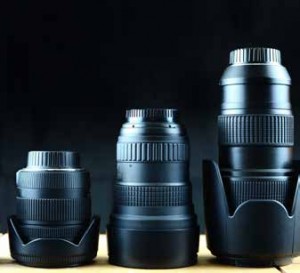
One of the best things about vacations is that they allow you to shift your perspective. Sometimes it’s just a slight adjustment, and sometimes it can be a sea change, depending on where you go and what befalls you while you’re there. But every vacation moves you in some way, which is part of their awesomeness—and their necessity. The human mind needs to be refreshed once in a while. A change in perspective is a change in thinking. Or maybe it’s the other way around.
The thing about this kind of perspective shift, however, is that it typically fades away over time. In the weeks and months after you return from your vacation, real life has a way of steamrolling everything back to normal—including your thinking.
Here’s the good news: your vacation photos can document your renewed perspective just as well as they document its noteworthy sites and activities. By experimenting with different lenses, you can physically change your perspective in a way that mirrors your mental change. And the purpose of this post is to provide a very brief overview of different DSLR camera lenses and how to use them effectively to give your vacation photos a fresh perspective.
Wide-Angle Lens
A wide-angle lens is defined as any lens whose focal length is less than 35mm (on a full-frame or film camera). It’s used most typically when can’t fit your subject into a standard sized frame. However, experts will tell you that wide angles have many creative uses beyond that.
Digital Photography School for one, seems to be a huge fan of the wide angle lens.
Wide-angle lenses have a couple of characteristics that you can exploit to take better photos:
- They exaggerate perspective, making things close to the lens look nearer than they are, and things in the distance look smaller. This stretches the sense of distance and scale. The shorter the focal length, the greater the effect.
- They have more depth-of-field at any given aperture than longer lenses. This helps you keep everything within the frame, or at least the most important elements, in sharp focus. It also means that accurate focusing isn’t so critical.
Source: http://digital-photography-school.com/7-ways-to-get-more-out-of-a-wide-angle-lens/
The post then provides seven tips for making the most out of wide angle lenses. Please refer to the lesson itself for more details, but here is a brief overview:
- Include something in the foreground that’s interesting to look at.
- When shooting portraits, include the model’s surroundings.
- Take photos from inside a moving car (the lesson explains how to do this safely).
- Use lines as a compositional tool.
- Tip the camera back to create the effect of converging verticals, a.k.a. ‘the snails-eye view’.
- Include a human element in a landscape photo.
- Explore documentary photography.
Telephoto Lens
According to cambridgeincolour.com, a ‘medium’ telephoto has a focal length greater than 70mm, whereas a ‘full’ telephoto lens has a focal length greater than 135mm.
Moreover, states the tutorial, it’s actually a misconception that a telephoto affects perspective—it’s actually the camera’s distance from its subject that affects perspective:
This normalization of relative size can be used to give a proper sense of scale. For full impact, you’ll want to get as far as possible from the nearest subject in the scene (and zoom in if necessary).
Source: http://www.cambridgeincolour.com/tutorials/telephoto-lenses.htm
The tutorial lists a few ways to make normalization work to your advantage, as well as a few other ways to use a telephoto lens to add interest to your images, such as:
- Keep the horizon line in the bottom third of your frame.
- Layer your subject matter at different distances to create powerful landscapes.
- Ensure you achieve pinpoint accuracy with your chosen point of focus.
- Telephoto lenses enlarge out-of-focus areas of your image; mind your background and ensure it doesn’t distract from your foreground subject.
- Their size and length makes telephoto lenses especially susceptible to camera shake, resulting in blurry images. You can offset it with reduced exposure time, or better still, use a tripod and remote.
The ‘Nifty Fifty’
I had actually never heard this term before, but I’ve seen it used on several photo interest sites to describe a 50mm lens. These sites all strongly recommend adding a 50mm lens to your arsenal, but for my money shutterstoppers.com explains its rationale the best, citing the ‘Top 8’ reasons to buy one. Of course, the author goes into much more detail in his post, but these are the short strokes:
- It’s cheap.
- It’s a professional quality lens.
- It’s compact & lightweight.
- Its perspective matches that of the human eye, which is especially handy for beginners.
- It’s fast—you can open it up to f1.8.
- It’s versatile; excellent for capturing portraits, landscape, street photography and, if you reverse-mount it, you can even take macros with it.
- It gives great ‘bokeh’ (which basically means its shallow depth-of-field can lend a ‘dreamy’ effect).
- It helps you know what you want. Being so versatile (see #6), a 50mm lens allows you to sample the effects of different lenses, giving you a better idea which ones will work best for your photographic ambitions.
As you might expect, you can learn much more about all of these lenses just by visiting your local London Drugs Camera Dept.
A photo vacation is a good place to start, but even if you don’t have any vacation time planned there’s no reason why you can’t experiment with new and different lenses right your own backyard. When it comes right down to it, after all, a change in perspective is nothing more than a new point-of-view.
Learning to use new lenses is fun, especially when there are so many excellent—and free—resources out there. Like these ones, for example:

